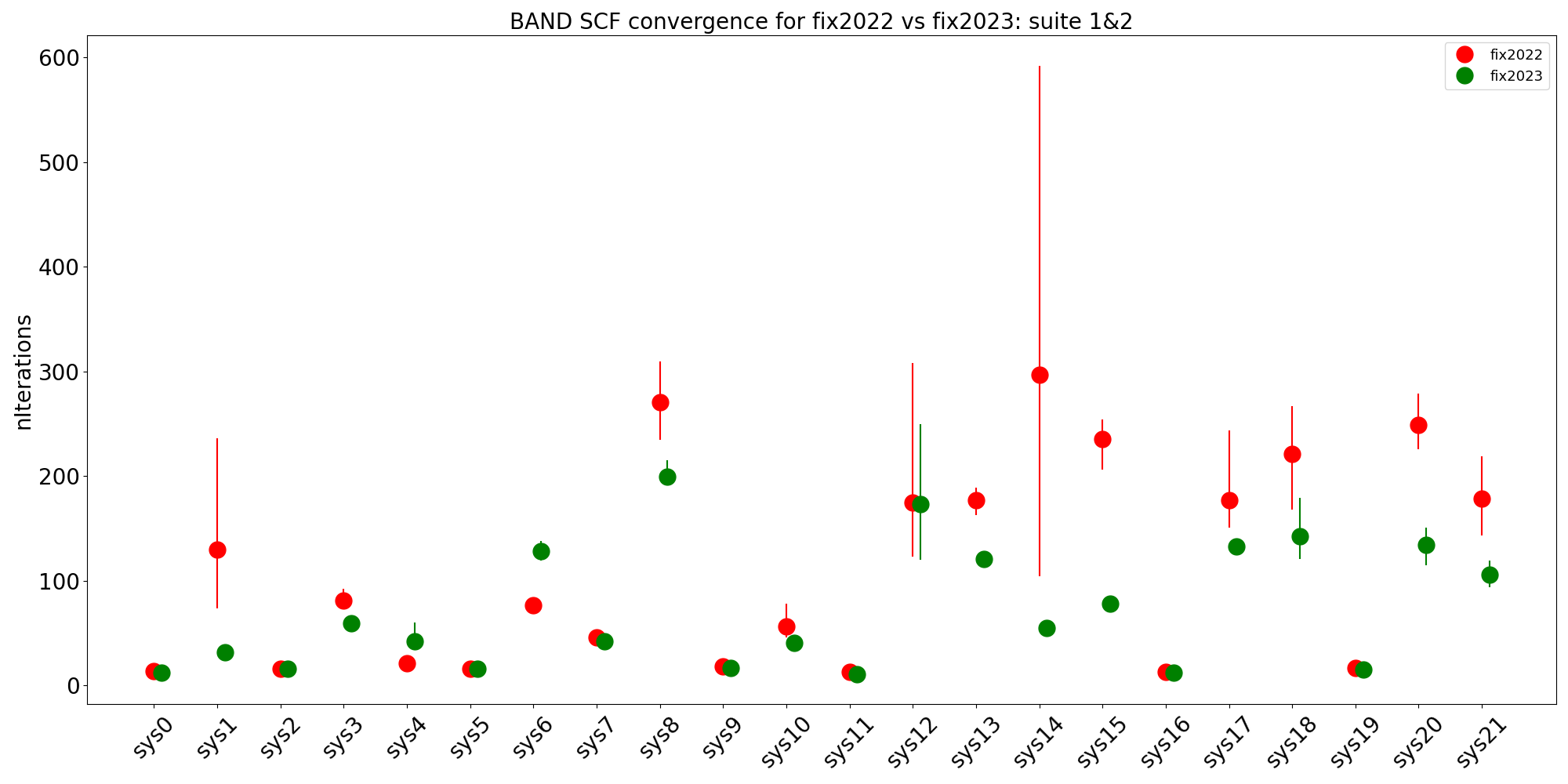What’s new in Band 2023.1¶
Improved SCF convergence with the MultiStepper.

Fig. 1 Comparison of the number of SCF cycles needed. For easy systems there is not much difference, for more difficult systems, however, the fix2023 (green) is an improvement over the fix2022 (red). As there can be some randomness in the number of iterations (butterfly effect) the calculations are repeated five times (using a different number of cores), the dot is the average number of cycles used, and the vertical lines show the spread in the number of iterations (if any). The maximum number of iterations was set to 1000.¶
Special (all electron) basis sets for comparison with literature data. Pure STO basis sets for direct comparison with ADF, and pure GTO basis sets as used by many other codes. Large GTO basis sets can also be useful for accurate MP2/RPA/GW calculations.
MP2/RPA/GW for molecules
TASKCC functional from Lebeda and coworkers. Compared to the TASKXC functional (good for band gaps) this improves atomization energies (the energy of open shell systems).
What’s new in Band 2022.1¶
Mulliken analysis (including PDOS) with spin-orbit coupling, see tutorial
Alternative elements (model impurities, fractional site occupancies)
Electron energy density function, also known as X.
Fermi surface, see tutorial
What’s new in Band 2021.1¶
The D4(EEQ) dispersion correction can now be used for periodic systems.
r2SCAN-D4 XC functional
New AMS driver features can be used in combination with BAND. See the page What’s new in the AMS driver for more details.
What’s new in Band 2020¶
New default: Scalar relativistic ZORA is now enabled by default (in previous versions “non-relativistic” was the default).
BAND can be used in QM/MM calculations with the new Hybrid Engine. See the Hybrid Engine manual and tutorial for more details.
New AMS driver features can be used in combination with BAND. See the page What’s new in the AMS2020 driver for more details (particularly important for BAND are the new strain-constraints and the periodic geometry optimizer improvements).